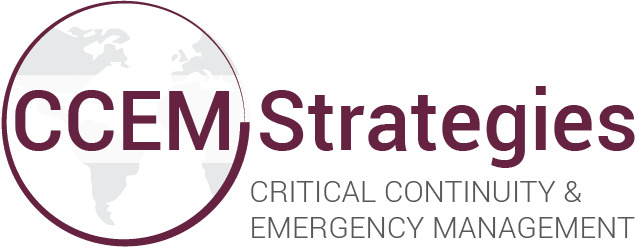It is early May 2023, and the news in Canada is already filled with stories and images of large-scale wildfires burning near communities. These wildfires are causing evacuations, destroying property, and disrupting daily life for thousands of people. Environment and Climate Change Canada (ECCC) predicts the severity of the wildfire season will be "well above average" for most of Western Canada. It is a good time to ask: Is your community prepared for the wildfire season?
The Role of Communities in Wildfire Season
Wildfire management is complex, especially when the seasonal severity is high. Communities (First Nations, Towns, Villages, Districts, Counties etc.) play a critical role in keeping the population safe. Their responsibilities can be to:
Track ongoing hazards and risks
Communicate with members
Maintain the delivery of critical services
Issue alerts and orders for evacuation
Coordinate with response agencies
Request and/or provide resources and mutual aid
Meeting those responsibilities is challenging, but steps can be taken to increase the likelihood of success.
Here are four (4) steps your community can take:
Review and enhance emergency plans
Develop readiness with training and practice
Establish and strengthen partnerships
Remain vigilant by monitoring hazards and risks
Review and Enhance Your Emergency Plans
Your community already has emergency plans. Review the plans and think about how wildfire might impact your community. Where might challenges occur? Which parts of the plan and which procedures might be difficult to execute?
Some examples of topics to focus on during the review would be:
Notification and communication with members
Issuing evacuation alerts and orders
Evacuation route planning
Evacuee assistance and reception center planning
Critical infrastructure continuity planning (water, municipal services, etc.)
Requesting and/or providing resources and mutual aid
As you review, look for places to enhance the plans and procedures. Incorporate lessons learned from previous seasons and seek opportunities to align with partners.
Develop Readiness with Training and Practice
Emergency plans are implemented by people who each have specific roles and responsibilities. Develop readiness and confidence in your teams by conducting training. Provide learning resources and make space for your team to ask questions before the event, so they are more prepared and confident to assist when needed.
Once people are trained and ready for the season, practice your plans with exercises. Run the scenarios: What if we had to issue an evacuation order? What resources would be needed and where would we get them? How would we communicate the message to residents?
It is always better to find answers to those questions before the health and safety of the community are at risk.
Establish and Strengthen Partnerships
Wildfires don't obey borders, territories, city limits, electoral areas, or any other societal boundaries. The management of wildfires also crosses boundaries, which is why partnerships are key.
Your community should strive to establish new relationships and strengthen existing partnerships that may be called upon during wildfire season. This could include internal partnerships, like aligning different departments and teams within your organization. It will also include external partnerships, like coordination with:
Wildfire and forestry professionals
Provincial emergency management agencies
Law enforcement
Federal agencies (Indigenous Services, etc.)
Neighbouring communities
Critical infrastructure (telecommunications, utilities, transportation)
Non-government organizations and community groups
And more
Remain Vigilant by Monitoring Hazards and Risks
Wildfires are dynamic events that can change rapidly, without warning. Wildfire agencies have learned to model and predict fire behaviour as best as they can, but there is never perfect information about the future. Monitor ongoing hazards, assess the risks, and think about how the community could react if things change.
Wildfires also create the conditions for other potential hazards and risks. These should be considered with contingency planning. This includes things like reduced air quality caused by smoke, or the disruption of critical infrastructure, like power or phone/internet lines. If part or all of a community is evacuated due to wildfire, there may be a cascade of other impacts like cultural trauma, property damage, pollution, waste/deterioration, security threats, and more.
Provincial agencies and other partners provide a variety of tools and sources of information for staying up to date on wildfire activity. Access the resources and reach out to partners when you have questions.
Need Help with Planning, Training, Practice, or Partnerships?
CCEM’s emergency management and business continuity team bring a diversity of experience and expertise to the task of helping communities prepare for, respond to, and recover from emergencies. Contact us today and let’s get the conversation started.


